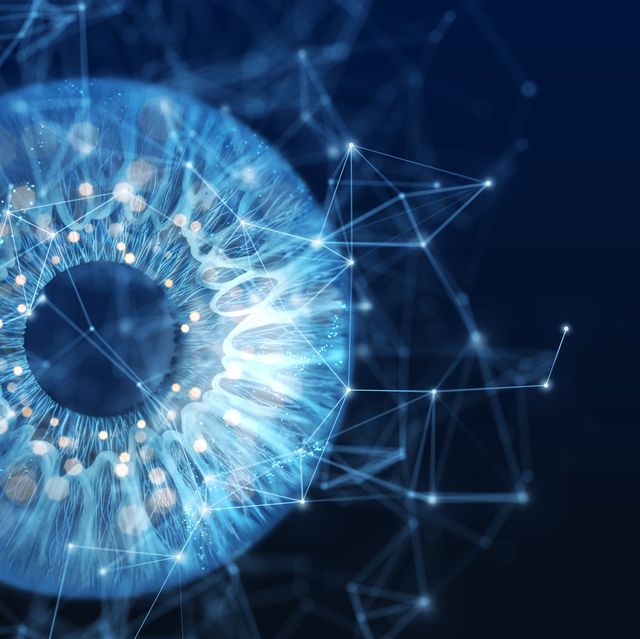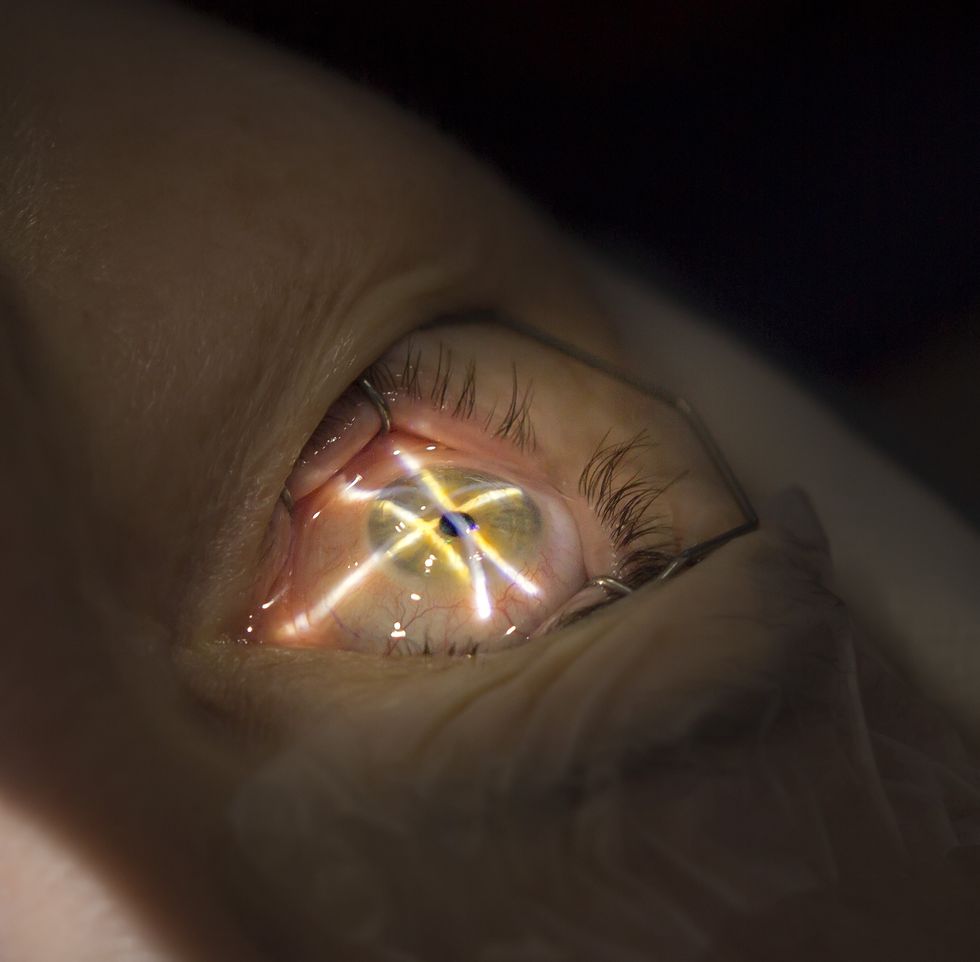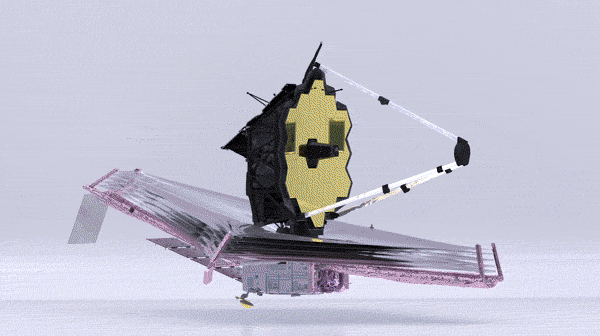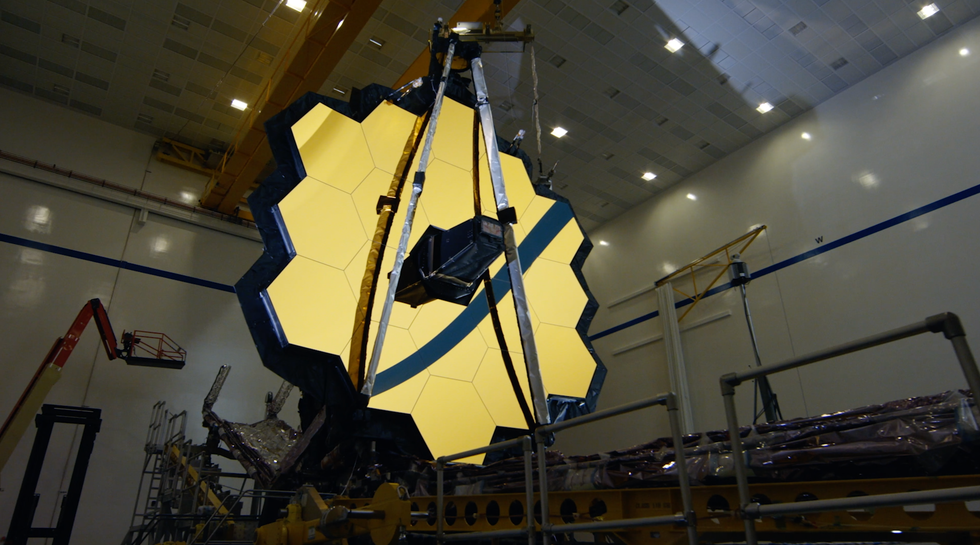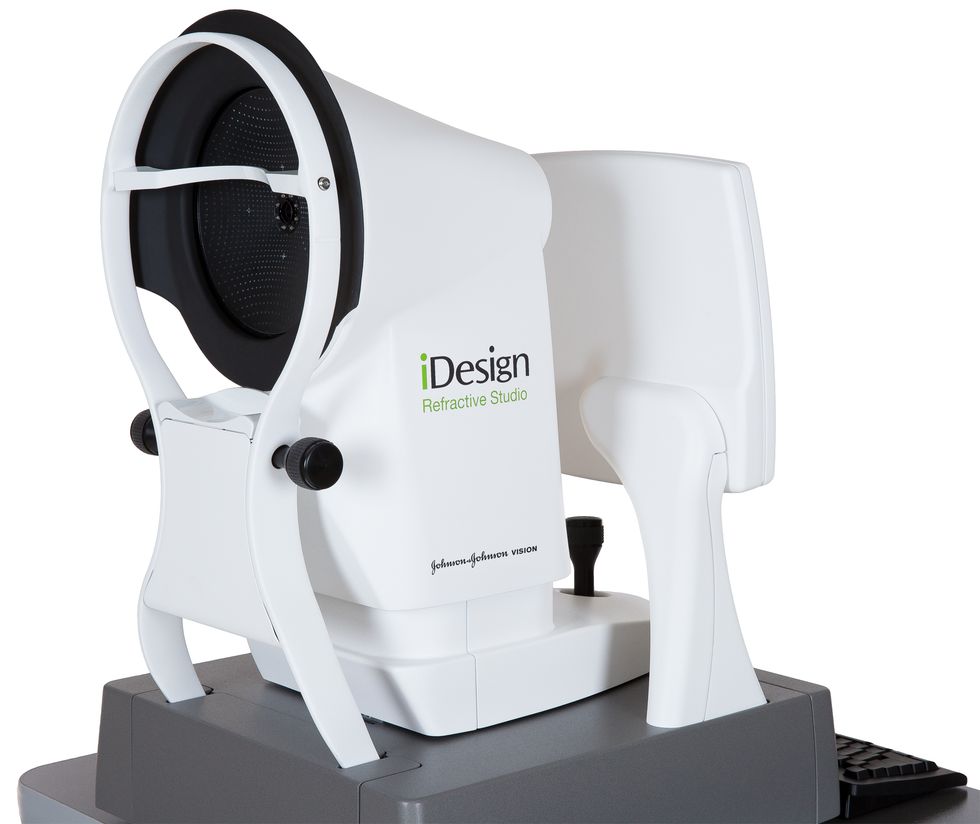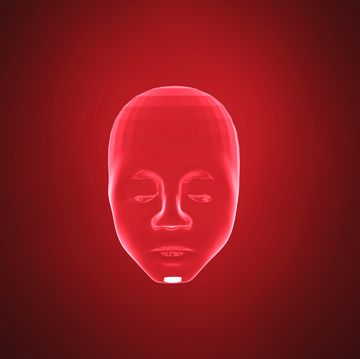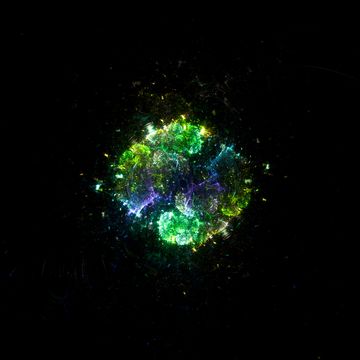- The James Webb Space Telescope was a jumping-off point for measuring people’s eyes more accurately for LASIK surgery.
- A machine used to analyze eye curvature was modified to measure Webb’s mirrors, and those superior results ended up improving LASIK technology.
- NASA technologies have found their way into many different arenas of life, like freeze-dried foods.
Due to a nerve problem, Lee Feinberg is legally blind in his left eye. The irony that Feinberg has been the Optical Telescope Element Manager for the James Webb Space Telescope (JWST) for the past 20 years is not lost on him.
👁 New technologies are amazing. Let’s nerd out over them together—join Pop Mech Pro.
“I first got into optics with the sort of idea of finding something to fix my left eye,” he explains. While he’s yet to find a solution to his own vision issue, Feinberg’s work with NASA on the James Webb Space Telescope at the NASA Goddard Space Flight Center has helped improve the eyesight of millions who enjoy the clear-eyed benefits that LASIK surgery yields with technology spun-off from the program.
Successful technology spinoffs are a consistent feature of the work NASA has undertaken since its start in 1958. From the freeze-dried foods and kidney-dialysis machines developed for the Apollo space program in the 1960s, to a ruggedized infrared camera and a process for making stronger, less pollutive concrete commercially licensed this year, the agency’s programs have led to about 2,000 spinoffs in total.
In the early 2000s, NASA Goddard engineers were struggling with the problem of how to produce a large, multi-segment mirror for the JWST. The successor to the Hubble Telescope was envisioned as the largest optical telescope in space, with the sensitivity to view objects too early, distant, or faint for Hubble. By the time it was launched last December, JWST’s development had long since sown the seeds for better eyesight here on Earth.
A Measured Approach To a Golden Mirror
The Webb Telescope has a big, gold mirror, 21 feet in diameter; the thin layer of gold helps JWST’s mirror reflect infrared light. It’s amazing to look at, but it was hell to make.
Space telescopes “see” by using mirrors to collect and focus light from distant stars. The bigger the mirror, the more details the telescope can see. Many of those details are hidden to human eyes, which can’t see through the dust in our universe.
By looking into space at a non-visible wavelength, JWST can see through the dust to stars and planets so far away that the expansion of the universe has made their light shift from visible to infrared.
The large mirror is actually a combination of 18 hexagonal segments which had to be folded to fit inside the French Ariane 5 rocket which launched JWST. Each of the segments is exceptionally light—lighter than Hubble’s mirror by a factor of ten in aerial-density, Feinberg says. Producing them with the curvature and surface needed in the vastly cold space environment was not something NASA was sure it could do 20 years ago. After all, the infrared Spitzer Space Telescope slated to launch in 2003 had a mirror just 33 inches in diameter.
“We projected that making the mirrors at [the] rate of the previous Spitzer mirrors, it would take 75 years,” Feinberg recalls. “We had to figure out a way to make them a lot faster.”
NASA needed a way to finitely measure the mirrors as early as possible during production, ensuring that each segment was achieving the same resolution and intended curvature as it was built. “We had to polish them in such a way that, when they cool down, they become the mirror shape that we want,” Feinberg says. “We had to match the curvature of one mirror to the next, which was a very challenging problem.”
Feinberg and his colleagues thought they could do that using a device called a scanning Shack-Hartmann wavefront sensor, an optical instrument used for characterizing an imaging system. NASA asked an Albuquerque, New Mexico-based company called WaveFront Sciences to help.
WaveFront was already using a Shack-Hartmann sensor to measure the surface of the human eye to create 3D images for contact and interocular lenses, developing a system called the Complete Ophthalmic Analysis System (COAS). Using a superluminescent diode (similar to a laser) to measure the surface and contour of the eye, COAS would ultimately find an application in LASIK procedures and in a system called iDesign.
A Natural Crossover
Crafting new algorithms to adapt COAS to measure the surface of the JWST mirrors was something the company viewed as a natural crossover between astronomy and opthamology, Kristian Santana remembers. Today, Santana is the principal electrical engineer for Santa Ana, California-based Johnson & Johnson Vision, but back then, he was part of the WaveFront team. “We were eager to see what we could do to help NASA achieve its goal.”
NASA’s investment in WaveFront helped it speed up development of COAS while both learned about measuring Webb’s mirrors. There were meaningful similarities in the need for consistent surfaces and curvatures across 18 telescope mirrors or two eyes, though Feinberg admits he didn’t see it at the time.
“I didn’t really pick up on that potential. There were other technologies in Webb that I thought could be useful for this or that. In retrospect the [LASIK] application seems obvious,” he says.
Santana says working on the JWST problem helped WaveFront “really push the boundaries to measure people’s eyes in a more accurate, faster way with better equipment.”
WaveFront fleshed out iDesign and rolled out the system commercially in 2015. By then, Abbott Medical Optics had acquired it. In turn, Johnson & Johnson acquired iDesign in 2017, which incorporated it into its iDesign Refractive Studio, which won FDA approval in 2018.
If you are someone who’s had LASIK, you may recall looking into the iDesign device for 20 seconds or so. It processes 3D eye measurements, which register on an integral display. A doctor inputs the measurement data into a laser for the LASIK surgical procedure.
The iDesign Refractive Studio is widely used throughout the optical care industry, and its results are widely praised. So are the first images from JWST that were released in July, including a spectacular image of young stars forming in the Carina Nebula.
Other spinoffs from JWST range from optical interferometers to applications for laser measurement, cutting and drilling, and flat-screen televisions. Feinberg thought all along that there would be other applications for technologies developed for Webb, “but I was still really happy that this [LASIK] spinoff became a reality.”
